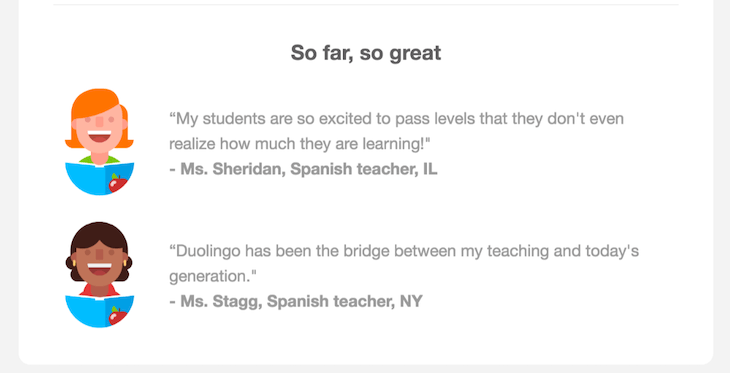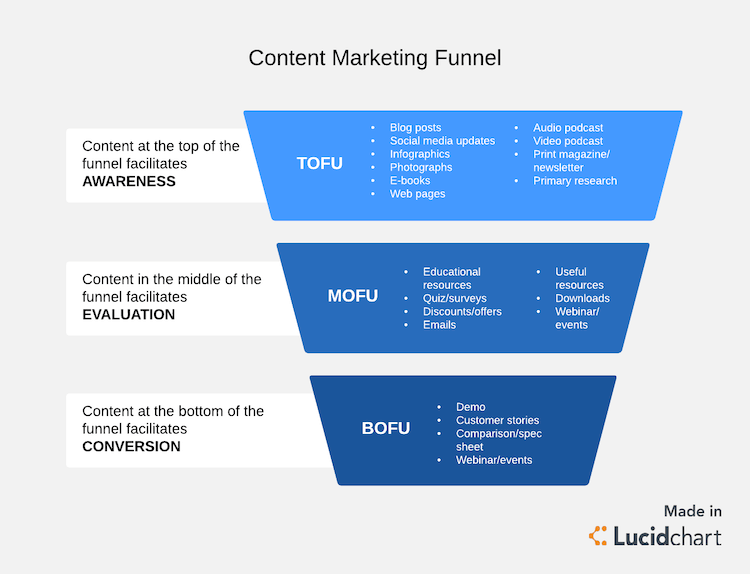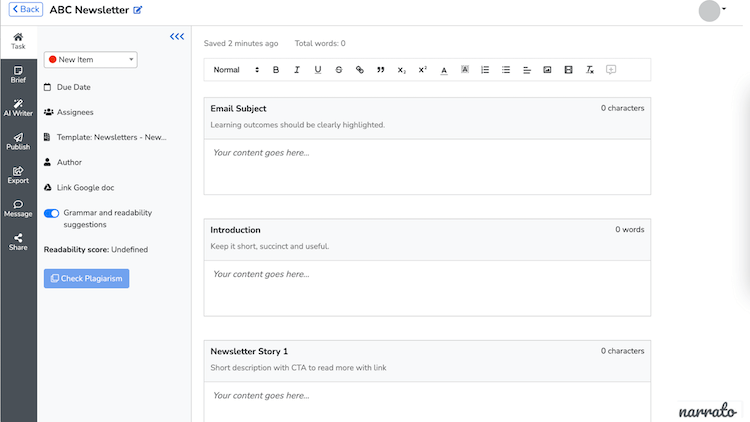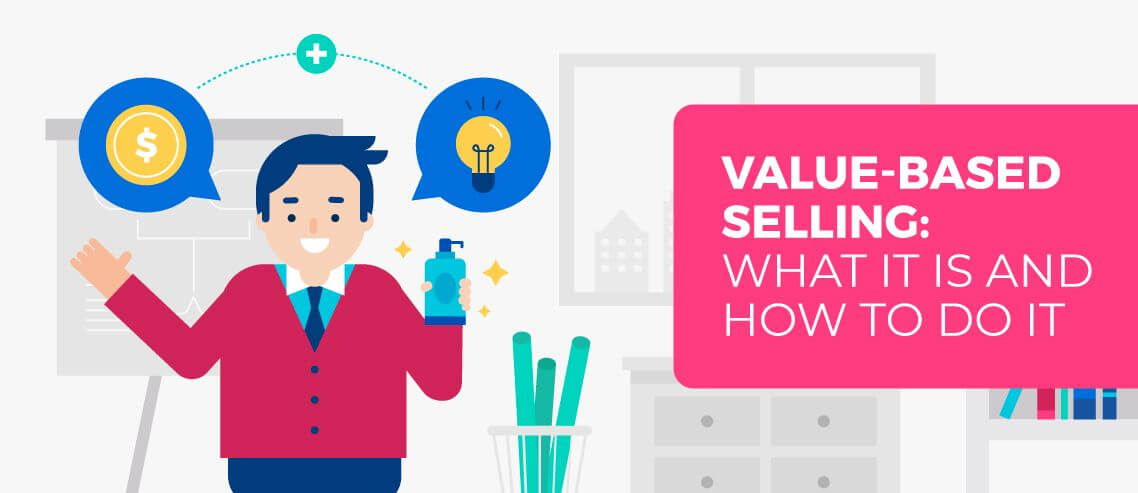How to Create Sales Enablement Content to Increase Revenue

Contents
Cold outreach can be warmed up to increase your chance of appealing to your prospect. Someone who doesn’t know you or your brand may not be responsive. This is where sales enablement content steps in to save the day. If your outbound email sequence offers the prospect the right solutions to problems they didn’t even realize they had, you have a strong chance of warming up your cold outreach.
Showing your prospects that you understand their pain points and have a solution to their problems can generate intrigue and interest that could act in your favor. This type of content will establish your company as a thought leader while supporting your prospects at every stage of the buying journey.
You can combine your sales and marketing efforts to create a better buying experience for your prospects and a strong strategy for yourself.
What Is Sales Enablement Content?
Sales enablement content refers to any type of content that you use to either empower your sales team with the right information needed to make a sale or to help the customer make an informed buying decision. Content can help you warm your cold leads by providing them with self-serve resources and familiarizing them with your brand. In fact, it doesn’t even have to be created from scratch every time. On many occasions, you will find that your marketing content can be used as this type of enablement as well.
Get input from various areas of your business including sales, marketing, product, and customer success.
Why Is Sales Enablement Content Important for Cold Outbound Email?
Cold outreach has become all the more challenging today. People have access to all the information they need. They can find and compare products online on their own, rather than relying on a salesperson.
Build Trust
By sharing helpful content in your outbound email sequence, you are gradually helping them learn about your brand and product on their own. And in the process, building their trust. By sending them articles or blog posts they might be interested in or a case study they could benefit from, you are showing them that you have the answers they are looking for.
Keep Customers First
Instead of a product-centric approach to sales, where you simply demonstrate why your product is the best and why they should buy it, you are taking a customer-centric approach. Sharing relevant content shows that you have identified the challenge they face, have an idea of why they may be facing it, and have also formulated a solution for it.
Establish Your Authority
Content also shows your authority in the field. For instance, say you are trying to sell a social media marketing tool, and you have insightful blog posts on social media marketing. This makes it easier to convince your prospects that you have done your research and you know what you’re doing.
By delivering value to the prospects at the top of the funnel, your sales team is able to generate qualified leads that are more engaged and invested.
What to Consider When Creating Sales Enablement Content
Creating content for outbound email sequences is all the more challenging because in most cases people will not read beyond the first few lines. To be able to capture their attention, you have to hook them in at the very beginning. Here are a few tips on how you can make an impact with your outbound emails from the word go.
Understand the Reader’s Perspective
The most important thing in a customer-centric sales approach is to think about how your customer thinks. If you were in the prospect’s shoes and you received a cold email, what would urge you to open it? Your sales enablement content should be crafted keeping this perspective in mind. And so should your email subject lines. Because no matter how awesome your content is if the subject line isn’t inspiring enough, the email will never get opened.
Don’t Focus On Your Company or Product
Again, as a reader, you wouldn’t care to know much about a new brand or a new product unless you saw some real value in it. So why would your prospects show any interest in what your company does or what your product is? Your content should revolve around the reader’s pain points and their solutions. The product is only a way to implement that solution.
Talk About What They Could Gain
You could go on and on about your product’s features, but in the end, how does that matter to the reader? Your product’s features are no good to them unless they see some benefit in it. So the content should focus on benefits rather than sales pitches.
Show Social Proof
The best way to convince your prospects about the value of your product/service is by showing them proof of what others have achieved with it. Your content needs to contain enough proof in the form of case studies, user testimonials, and more.
Here’s an example of how Duolingo is using social proof in its sales and marketing emails.

Source: EmailOctopus
How to Create Effective Sales Enablement Content for Outbound Email
Now that you know what impactful content should focus on, let us get to the process of creating it. Outbound email sequences look different for each business. But it is likely that your outbound sequence targets prospects at different stages in their journey.
For instance, someone who has never heard about your brand/ product is at the top of the funnel and at the awareness stage. Someone who has engaged with your brand in some way, be it a website visit or engaging on your blog, has taken one step closer to the interest stage of the funnel and so on.

Source: Lucid Chart
So your outbound email sequence would also coincide with these different stages and so should your sales enablement content.
1. Top-Of-The-Funnel Sales Enablement Content
This is by far the most important part of the outbound email sequence as the prospect is still cold to you and this is your chance to get hold of their attention. If your top-of-the-funnel content can do the trick, it becomes a lot easier to qualify leads and guide them further down the funnel.
The top-of-the-funnel content will usually be all the content that your marketing team creates to generate brand awareness. So for the top of the funnel, you need not really create content from scratch.
TOFU content includes –
- Blog posts
- Infographics
- E-books
- Videos
- Podcasts, etc.
You can easily repurpose some of your blog posts or e-books and include key points from these in an email newsletter or an infographic.
Creating Top-Of-Funnel (TOFU) Content
Content creation for the top-of-funnel (TOFU) is usually taken care of by the content marketing team, but it is always best if both sales and marketing work in close conjunction right from the start.
The sales team can provide valuable insights into the customer’s journey that can be used by marketing to create highly-targeted content.
To make it easier for your sales and marketing team to collaborate on content, you need a single platform where they can plan, create and provide feedback on content. One good example of a content collaboration platform is Narrato, which helps with content ideation, planning, creation, collaboration, and workflow management. You can add team members under different roles on Narrato, with different access levels. You can create and assign content tasks, and gather feedback through on-content comments, @mentions, and on-platform messaging.
All the content that your marketing and sales teams create can be saved under dedicated folders on the platform making it easier for you to find them when you need it. You can create custom templates for different content types, including your email newsletters.
Here’s an example of a template on Narrato.

You can also create custom style guides with your brand guidelines so irrespective of who is creating the content, there is consistency in branding and quality. There are a host of other features on Narrato like AI writing, SEO content briefs, content calendars and boards, AI topic generators, and more that can help you create impactful content faster.
When creating content that can drive sales, make sure to adopt a product-led content marketing approach. This implies skillfully weaving the product into the content as a solution, without being salesy or promotional. This generates awareness about the product and its use cases in the audience’s mind.
Repurposing TOFU Content for Outbound Emails
It may not be possible to share full-length blog posts or articles in your outbound sales emails. But there are various ways of content repurposing that can be implemented. For instance, if you have a valuable blog post you want to share with a prospect, you could take the key insights from the post and turn them into an engaging infographic.
Having a visual content creation and collaboration tool like Canva or Vistacreate can be a huge help here. Both these platforms have hundreds of templates and a very easy UI, so you can easily repurpose long-form content to engaging visuals without any expertise in graphic design.

You could also repurpose video content into GIFs wherever possible to give your prospects a sneak peek and direct them to the full video for more.
Content shared through outbound email can be a good way to drive traffic to your blog and other content distribution channels.
Here’s an example of how you can create an email series or a drip campaign from a single piece of content depending on whether the prospect opens your email or not.

Source: Instapage
Adding a Call-To-Action
If it is an outbound sales email, there has to be a strong call to action or it’s pointless putting in all this effort.
One important thing to keep in mind for TOFU sales content in your outbound sequence, though, is that you are not required to make a sales pitch yet. The first of your outbound emails should aim to grab the prospect’s attention and earn trust with valuable content, rather than selling.
So your CTA should not be ‘Request a demo’ or ‘Buy now’. You should rather encourage the prospect to engage with more content by asking them to ‘Read more’, ‘Learn more’, or ‘Download’.
2. Middle-Of-Funnel (MOFU) Content
If your prospect is at the middle of the funnel, you’ve probably already qualified the lead or they may have opted in. This means it doesn’t count as cold outreach anymore. But nonetheless, sales enablement content plays an important role here too.
The middle of the funnel is where the customer has shown an interest in your product or service and is making various considerations. At this stage, they are trying to learn more about your product and evaluate it. MOFU content should include more detailed educational content like –
- Case studies
- Guides
- Webinars
- Research reports
- Video tutorials, etc.
This content will provide deeper insights into the market and the product, which needs inputs from marketing, sales, and product teams too if you are creating it in-house. Or you outsource this content if your in-house teams have their hands full. A reputed content marketplace with skilled writers can do the job for you as long as you provide a detailed brief.
Whatever you choose, make sure that there is no compromise in quality as this is the most crucial stage of a prospect’s journey. If you can give them enough value here, a conversion is highly likely.
3. Bottom-Of-Funnel (BOFU) Content
At the bottom of the funnel, the customer is at the decision stage. Your job now is to help them make that decision faster by providing all the resources you can.
BOFU content is where your actual sales pitches should be. This includes –
- Demos
- Product comparison sheets
- ROI calculators
- Customer stories/testimonials, etc.
At this stage, the sales team should be actively following up after sharing content as the customer is just one step away from converting.
Results That Boost Your Revenue
Sales enablement content in your outbound emails can achieve amazing results for your business. All you need to do is identify which content can be reused, detect where gaps exist that you can fill with new sales content, and share the right content with the prospect at the right time. Content shared with prospects through email outreach at the right moment can trigger actions and increase conversions. So give it a try and see how your sales team’s productivity and morale are boosted by a simple change in approach that also impacts revenue.





